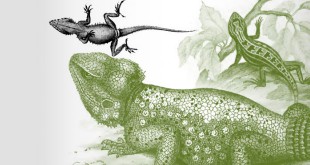Reptiles Encyclopedia
Read More »Search Results for: Leo
Boomslang
Boomslang — A boomslang (Dispholidus typus) is a relatively small, venomous colubrid snake native to sub-Saharan Africa. It is currently the only species in its genus, although several species and subspecies have been described in the past. Its name means “tree snake” in Afrikaans and Dutch. It is thought to be closely related to members of the genera Thelotornis, Thrasops, …
Read More »Springtail
Springtail — Springtails (Order Collembola) form the largest of the three orders of modern hexapods that are no longer considered to be insects (along with the Protura and Diplura). The three orders are sometimes grouped together in a class called Entognatha because they have internal mouthparts, but they do not appear to be more closely related to one another than …
Read More »Gypsy Moth
Gypsy Moth — The gypsy moth, Lymantria dispar, is a moth in the family Lymantriidae of Eurasian origin. Originally ranging from Europe to Asia, it was introduced to North America in the late 1860s and has been expanding its range ever since. Gypsy moth egg masses are typically laid on branches and trunks of trees, but egg masses may be …
Read More »Firefly
Firefly — Lampyridae is a family in the beetle order Coleoptera, members of which are commonly called fireflies, lightning bugs or (ambiguously) “glow worms” due to their conspicuous nocturnal (or, more accurately, crepuscular) use of bioluminescence to attract mates or prey. Fireflies are capable of producing a “cold light” containing no ultraviolet or infrared rays, with a wavelength from 510 …
Read More »Beetle
Beetle — Beetles are a group of insects which have the largest number of species. They are placed in the order Coleoptera, means “sheathed wing”, and contains more described species than in any other order in the animal kingdom and constitute about twenty-five percent of all known life-forms. Forty percent of all described insect species are beetles (about 350,000 species), …
Read More »Triceratops
Triceratops — Triceratops was a herbivorous genus of ceratopsid dinosaur that lived during the late Maastrichtian stage of the Late Cretaceous Period, around 68 to 65 million years ago (mya) in what is now North America. It was one of the last dinosaur genera to appear before the great Cretaceous–Tertiary extinction event. Bearing a large bony frill and three horns …
Read More »Trachodon
Trachodon — Trachodon (meaning “rough tooth”) is a dubious genus of hadrosaurid dinosaur based on teeth from the Campanian-age Upper Cretaceous Judith River Formation of Montana, U.S.A. It is a historically-important genus with a convoluted taxonomy that has been all but abandoned by modern dinosaur paleontologists. Interestingly, despite being used for decades as the iconic duckbill dinosaur per antonomasia (see …
Read More »Struthiomimus
Struthiomimus — Struthiomimus was a long-legged, ostrich-like dinosaur of the family Ornithomimidae, which lived in the area that is now Alberta, Canada, during the late Cretaceous Period, approximately 75 million years ago. Its generic name is derived from the Greek strouthion meaning ’ostrich’ and mimos meaning ’mimic’ or ’imitator’. The specific name altus is from Latin, meaning ’lofty’ or ’noble’. …
Read More »Mastodon
Mastodon — Mastodons or Mastodonts are members of the extinct genus Mammut of the order Proboscidea and form the family Mammutidae; they resembled, but were distinct from, the woolly mammoth which belongs to the family Elephantidae. Mastodons were browsers while mammoths were grazers. Mastodons are thought to have first appeared almost four million years ago. They were native to both …
Read More » Kids Portal For Parents India Kids Network
Kids Portal For Parents India Kids Network
